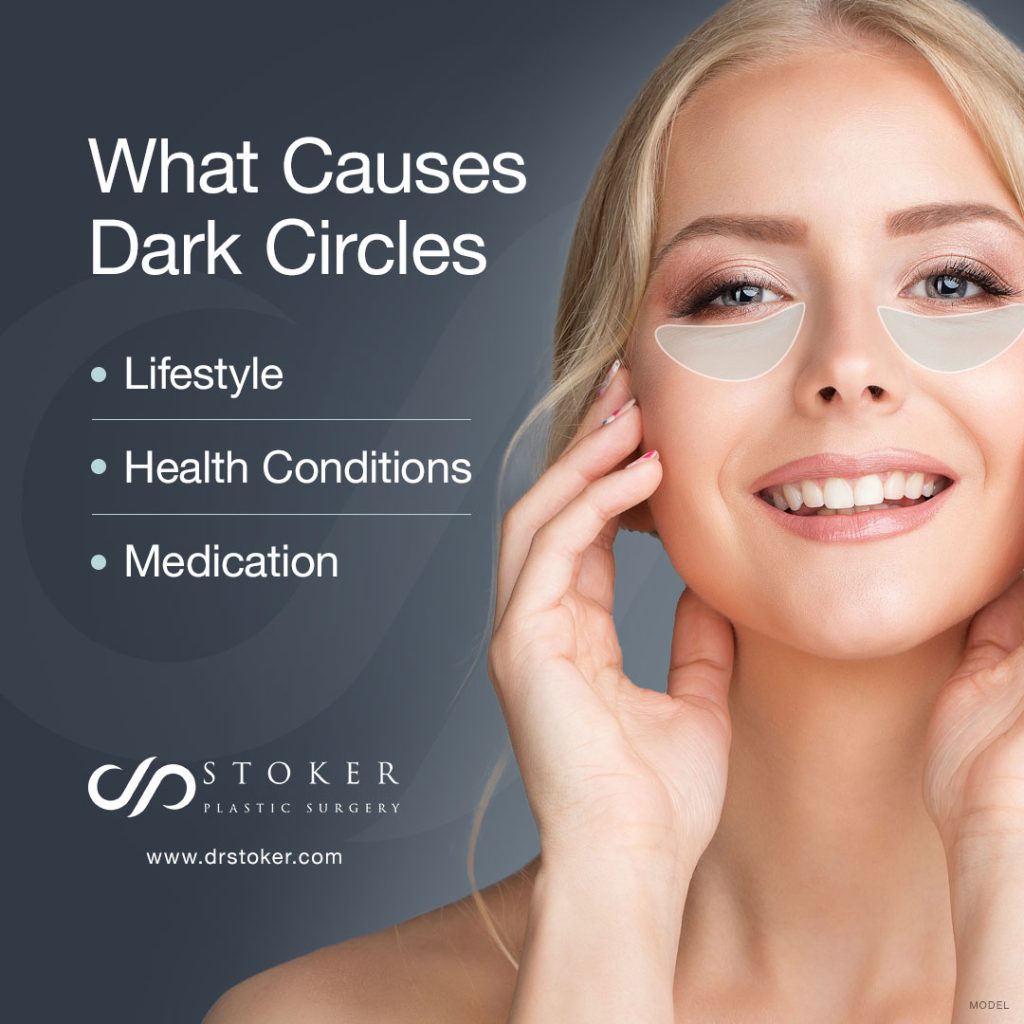You diligently follow a nightly skincare routine, drink plenty of water, and—on most nights—get enough sleep. So why are you waking up to dark circles under your eyes that make it appear you’re exhausted from the get-go? There could be several reasons and, even though top-of-the-line eye creams can help keep your skin looking youthful, they often aren’t enough to get rid of dark circles. Is microneedling under the eyes the answer?
What Causes Dark Circles?
Dull skin and under-eye bags typically occur due to lack of sleep, dehydration, or hereditary traits. Various issues may cause dark under-eye circles, and improving their appearance requires more than eye cream.
Facial anatomy is one of the most common causes of dark circles. Your eyes may appear more “sunken,” which leads to the shadowing that shows up as dark circles under the eyes. The natural aging process can also change the appearance of the area under the eyes, as our faces lose volume and dark circles appear more prominently.
Lifestyle Causes
Genetics isn’t the only reason for dark circles. Fatigue, stress, and exhaustion of the muscles around the eye may also play a significant role. Alcohol consumption, smoking, and excessive intake of caffeinated beverages can exacerbate darkness, too.
Health Conditions
Certain medical conditions, though less common, can affect how the area under the eyes looks. Systemic conditions such as gastrointestinal disease, thyroid dysfunction, vitamin K deficiency, hormonal imbalances, and heart and kidney disease can also cause this type of dark discoloration. Eczema, contact dermatitis, or any airborne or food allergy may also be responsible.
Medication
Certain medications like oral contraception, hormone therapies, psychiatric medications, iron, and chemotherapy treatments can also contribute to dark circles around the eyes.

Why Eye Cream Isn’t Enough
If your under-eye bags and dark circles are caused by something other than facial anatomy, eye cream can be beneficial. Eye creams target common concerns like tightening, brightening, and depuffing, but they often aren’t enough to erase dark circles—particularly the ones caused by genetics or age.
How Does Microneedling Treat Dark Circles?
It’s important to remember that another name for microneedling is collagen induction therapy. As we age, the decrease in the production of collagen and a protein called elastin results in the appearance of dark circles under the eyes. This thinning of the skin can make it easier to see veins under the eyes.
At our practice, we use the SkinPen® microneedling device, which is a hand-held instrument tipped with very short, fine needles that create “micro-injuries” on the skin’s surface. These micro-injuries stimulate the body’s natural healing process, which repairs and regenerates skin cells. It also increases blood flow to the area and boosts the production of new collagen and elastin. It’s a customized treatment, so the provider can adjust the depth of penetration for the thin, delicate skin below the eyes.
Microneedling Under the Eyes With Platelet-Rich Plasma (PRP)
We can enhance the effects of microneedling—under the eyes and any other treatment area—by combining it with PRP. The provider applies PRP before performing the microneedling procedures, enabling the growth factors in the PRP to penetrate below the skin more efficiently through microchannels created by the needles. PRP is created by drawing blood from the patient and then spinning it in a centrifuge to separate the plasma from other parts of the blood. PRP has been used for years to help athletes and others heal more rapidly following an injury, and the same concept works for cosmetic treatments. Some patients may also combine microneedling with serums containing vitamin A or vitamin C to boost their results.
Other Treatments for Dark Circles Under the Eyes
Dermal fillers, chemical peels, and laser skin resurfacing are all popular methods for treating the appearance of under-eye bags.
Injectable hyaluronic acid gel fillers such as Restylane® and JUVÉDERM® products are the most commonly used in our practice to correct the hollow and sunken look associated with dark shadows under the eyes. It’s important to correctly identify the cause of your dark circles before getting fillers, which add volume to the area.
If the issue is actually hyperpigmentation, then fillers aren’t the appropriate treatment option, but chemical peels might be. A chemical peel addresses dark pigmentation and improves the skin’s overall quality around the eye area. Often made of glycolic acid or retinoic acid, a light or superficial chemical peel lightens the dark pigmentation under the eyes. Microneedling also treats hyperpigmentation.
Gentle, fractional laser skin resurfacing treatments can also lighten dark pigment under the eyes and stimulate the production of new collagen. Intense pulsed light (IPL) may be a better option for patients with small blood vessels close to the skin’s surface that are causing dark circles.
Plan Your Treatment
If you have other concerns besides dark circles under the eyes, our treatment planner can help you zero in on treatment options you might consider before coming in for a consultation. Please use the online form to request a consultation with Dr. Stoker or one of our aesthetic specialists or call us at (310) 300-1779 to schedule an appointment.


Leave a Reply